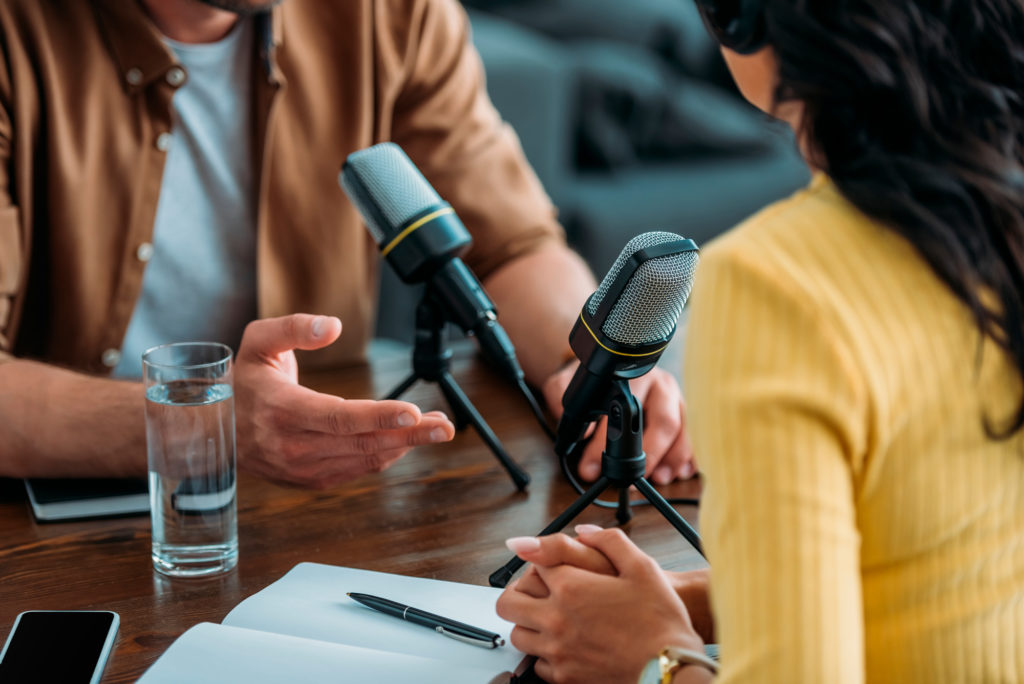There are plenty of ways to make money from your podcast, but the truth is, the ads are where the top dollars are.
According to Edison Research, most podcast listeners in the US are wealthier than average, making them an attractive demographic for advertisers. That is why it makes sense to find podcast sponsors who will be willing to invest in your show in exchange for a boost in their business sales.
If you already have a broad base of podcast listenership, then inviting sponsors might be the next step for you to monetize your podcast.
But first, learn about how sponsorships work and what you can do to get them to support your podcast.
Table of Contents
How Sponsorships Work
Sponsors work with podcasters because they want to sell their products and increase brand awareness.
Before anything else, though, you have to be familiar with ad placement. Sponsors have three ad spot options: pre-roll, mid-roll, and post-roll.
- A pre-roll ad spot is when a podcaster talks about the sponsor’s product or service for about 15 seconds before starting the main part of the podcast.
- Mid-roll refers to the host discussing the sponsor in the middle of the podcast for about 60 seconds.
- A post-roll ad is a 15 to 30-second call to action near the end of the podcast.
Best practices dictate limiting advertisements to two ad spots in an episode. More than that, you risk losing your listeners.
Now, sponsors measure ad effectiveness by using the following metrics:
CPM
CPM stands for cost per mille (‘thousands’ in Latin), which is the cost that sponsors will pay for every 1,000 podcast downloads, views, or impressions on social media networks. To compute this, divide the cost by impressions, then multiply it by 1,000.
The current industry standards for CPM are $15 to $20 per 1,000 listens of a 15-second pre-roll; $20 to $25 per 1,000 listens of a 60-second mid-roll; and $10 to $20 per 1,000 listens of a 30-second post-roll.
CPA
Another metric that sponsors use is CPA or cost per acquisition. It’s the number of sales or signups that they get because of a podcast ad.
Sponsors use CPA to give podcasters a referral bonus for every signup they get. The average CPA range is $15 to $30 for the standard podcast model—a quick mention of the sponsor before the episode starts and a longer exposure in the middle of the podcast.
Sponsors may pay more for longer ads in the intro or less if the ad only runs after the episode.

Steps in Getting Your First Podcast Sponsor
Step 1: Know your audience
Before you start pitching businesses to sponsor your podcast, you first have to know your audience inside out.
What product or service would your audience be stoked to hear about? If your podcast is all about gardening, then you’re certain that the people listening to your podcast are all interested in the same topic.
A business selling gardening tools might interest your audience, resulting in higher CPM and CPA for you. Don’t expect to get the same response if your sponsor sells web design services unless your audience is advanced gardeners who are looking to build a gardening-related business online.
What problems does your audience have? You can conduct surveys to know what their most common concerns are. Maybe they want to know how to get rid of damaging insects, or how to avoid back pain while gardening. These concerns will give you an idea of what kind of businesses to pitch so that the ads will be relevant to your audience.
You can also take a look at what goals your audience is trying to achieve. Are they starting out with their green journey? Do they want to live a more sustainable lifestyle? Do they want to make a business out of their hobby?
All these goals can guide you in choosing sponsors for your podcast.
Step 2: Create your pitch
A pitch is an email you send to prospective sponsors giving them information about your podcast. It should pique their interest and make your podcast look like a lucrative avenue to advertise their business.
Although you can simply email your prospective advertiser, one way to make your podcast look official and irresistible is by using a slide deck. It’s a PDF that contains all the information the advertiser needs to know to start sponsoring your podcast, including details about your show, your team, and your pricing.
Here are some tips on creating a slide deck:
- Create a master template so that you don’t have to build a brand new slide deck each time you reach out to a potential sponsor.
- Make sure that you customize each slide deck for the business you’re sending it to. No one wants generic pitches.
- Make sure the following parts are in your slide deck:
- Title of the show with your logo
- About Us section detailing your show description, such as what it’s all about, episode length, common topics, format, hosts, guests, and the like
- A section showing your listener demographics and relevant anecdotes showing how much your listeners love you
- Pricing section with your rates and any alternative partnership ideas you may have
- Team section with your team’s photos, bios, and contact information
Aside from a slide deck, you can spice up your pitch by adding a short podcast demo as an mp3 attachment or a private link. It should be short, but it should also contain the best parts of your podcast, thus giving potential sponsors a better feel of your podcast.
Step 3: Set your price
There are three ways to help you set your price when getting a podcast sponsor:
Based on your episode downloads
First, estimate how many people in your audience would most likely respond to your ad. The average response rate is 1%, meaning only 1% of people who get exposed to an ad do something about it.
Calculate your estimated signups by multiplying your number of episode downloads by 0.01. That means that an episode with 100,000 downloads could yield 1,000 signups for a sponsor, while an episode downloaded 100 times might only get an average of one signup.
Based on your engagement rate
You can also set your price estimate based on your engagement rate. To do this, check the average number of responses you had if you’ve done surveys and solicited listener contributions before. You can also check the average number of messages, tweets, and emails you receive per episode. Divide that number by your average total downloads to get your estimated response rate.
For instance, if your podcast gets downloaded 100 times per episode and you receive about ten emails on average, that’s a 10% response rate.
A combination of both
You can also do both calculations and pick a number in between to get your pricing range. Based on the examples above, a 1% response rate and a 10% engagement rate yield five expected signups overall.
Take this number and multiply it by the average CPA range of $15 to $30. That means that you can charge $75 to $150 to your sponsors to get an estimated five signups.
It’s a concrete way to justify your pricing to your potential sponsors.

Step 4: Follow up your pitch
What if you sent your pitch, and all you heard back are crickets?
Don’t worry, that doesn’t mean that your proposal got rejected. There are plenty of reasons why you didn’t get a response, and it’s not always because they’re not interested.
When creating a follow-up email, make sure that it has the right balance between persuasiveness and politeness. The last thing you want to become is annoying.
Here are some tips on creating that follow-up email:
- Follow up at least one week after you sent your first email. You have to give the person on the other end a chance to read your email first.
- Follow up only once.
- End on a gracious note and leave the door open for collaborations in the future. Some prospective sponsors might be thinking, “not right now,” instead of a definitive “no,” so you can say something like, “I understand that sponsorship may not feel like the right move for you at the moment, so please feel free to send a note anytime. I hope to work with you in the future!”
Where to Find Podcast Sponsors
Small Businesses and Independent Creators
You don’t have to pitch a huge company to get a sponsor. Even small businesses with little money can sponsor podcasts, especially online shops that sell products across the world. The exposure they can get from podcasts with an active listener base can be attractive to them.
Podcast Networks
Podcast networks, like PodcastOne, are a group of podcasts produced and distributed by a single company. They can assist you in a lot of podcast services, such as statistics, hosting, promotions, and even advertiser negotiations. That said, expect these networks to take a cut in your sponsorship.
Before committing to one, research different networks first to know their rules and requirements and see if the benefits outweigh the costs.
Podcast Hosting Services
These are platforms that provide various podcast services in exchange for a subscription fee. Many of them have an advertising program you can apply to.
Like podcast networks, podcast hosting services also take a cut because they assist you in matching with advertisers.
Outside Ad Networks
Ad networks like AdvertiseCast and Midroll match advertisers with independent podcasts based on stats and popularity. You can list your podcast for free, allowing advertisers to shop for your ad spots.
This is great for niche podcasts as a lot of niche advertisers may find you in these networks.
Though finding sponsors may take a lot of work, the rewards are more than enough to help you grow your podcast. Make sure to research your best options and negotiate with sponsors.
Finally, always remember that your goal is to provide high-quality and relevant content to your listeners. The more value you provide to your audience, the bigger your listener base becomes. And when that happens, podcast sponsors will line up at your doorstep.